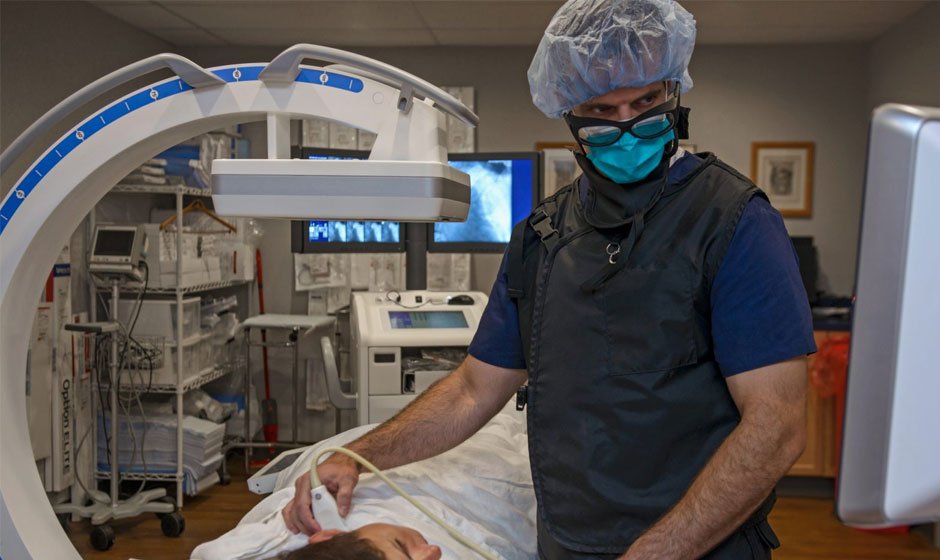Interventional Radiology: Techniques and Applications

Interventional radiology represents a groundbreaking chapter in medical science, merging imaging technology’s precision with the targeted treatment’s directness. This field has greatly changed specific medical procedures, providing less invasive alternatives to traditional surgery. By decreasing the requirements for open surgeries, this medical speciality minimises physical trauma, contributes to quicker patient recovery, and lessens hospital stays.
Understanding Interventional Radiology
Interventional radiology utilises imaging techniques like X-rays, CT scans, Craft Body Scan, MRIs, and ultrasounds to navigate tiny instruments, like catheters, through the body to areas requiring treatment. The minimal invasion of this method results in shorter recovery times and lower risk than traditional surgeries. It allows for precise treatment, reducing the impact on healthy surrounding tissues, which is particularly beneficial in complex medical conditions.
Common Techniques
- Angiography: This is essential for envisioning blood vessels and is instrumental in interpreting blockages or abnormalities in veins and arteries. It’s usually the first phase in various interventional procedures.
- Balloon Angioplasty: This procedure involves using a tiny balloon, inserted and inflated within narrowed or blocked blood vessels, to remove blockages. After clearing the passage, a stent is often placed to keep the vessel open. It’s an essential treatment for heart diseases and a preventive measure against strokes.
- Embolisation: This technique introduces specific materials directly into a blood vessel to block it. This method is primarily used to control bleeding or stop the blood supply to tumours, playing a crucial role in handling internal bleeding and cancer treatments.
- Thrombolysis: This treatment focuses on breaking down blood clots in arteries and veins, thereby improving blood flow and preventing damage to tissues and organs. It’s a critical procedure for urgent medical situations like pulmonary embolisms or strokes.
Applications in Various Medical Fields
Interventional radiology, one of the significant types of clinical radiology, is a versatile tool used in different branches of medicine.
- Oncology: This method is applied in tumour embolisation and radiofrequency ablation, focusing on cancer cells.
- Urology: Assists in managing kidney stones and some infertility cases, presenting less invasive alternatives compared to traditional surgeries.
- Gastroenterology: Aids in handling liver conditions and gastrointestinal bleeding, frequently cutting down the necessity for complicated surgical procedures.
- Gynaecology: Effective in treating uterine fibroids and post-partum bleeding, becoming a key approach in tackling women’s health concerns.
Advantages
This technique’s primary benefits include reduced risks of infection, less pain, and shorter recovery times. By avoiding large incisions, interventional radiology lessens bodily stress, facilitating faster recoveries. Additionally, it often results in less scarring and lower overall healthcare costs due to the reduced need for prolonged hospital stays.
The Job of Radiologist
Radiologists specialising in this field have extensive training in diagnostic imaging and conducting minimally invasive procedures. Their expertise is vital in ensuring accuracy and effectiveness. They work with other medical professionals to provide personalised care, ensuring each procedure is tailored to the patient’s needs.
Safeness and Effectiveness
While IR is generally safe, it’s not without risks. However, major complications are rare compared to traditional surgeries. Patients generally undergo a thorough evaluation to ensure they are suitable for these procedures. Continuous advancements in technology and techniques further enhance the safety and efficacy of these procedures.
The Future of Interventional Radiology
As technology progresses, interventional radiology continues to evolve, expanding its capabilities. The future promises even more refined techniques, broadening the scope of treatable conditions with reduced invasion and recovery time. Research and innovation are key drivers in this evolution, with ongoing studies to improve outcomes and expand applications.
Conclusion
Interventional radiology stands as a beacon of modern medical innovation. It offers a blend of diagnostic and therapeutic solutions with minimal invasion, significantly improving patient care and treatment efficacy. As technology evolves, so too will the possibilities within this exciting and essential field of medicine, continuing to revolutionise patient treatment and recovery experiences.



